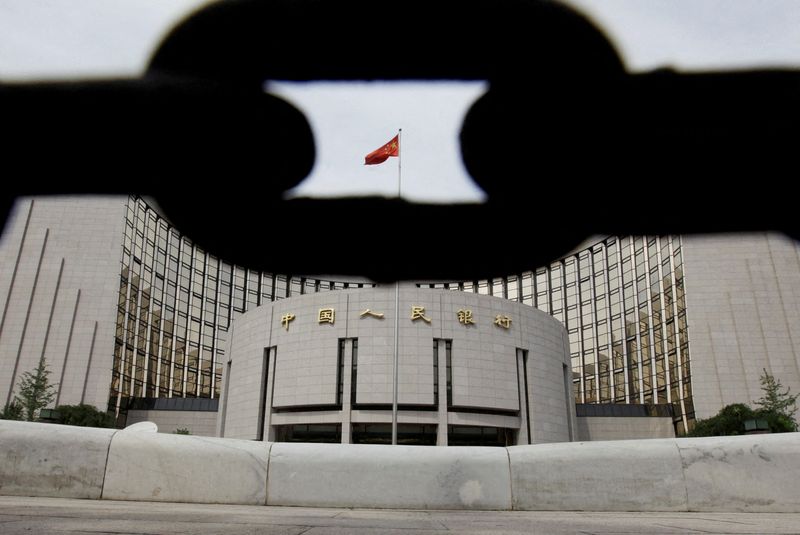By Karin Strohecker and Vincent Flasseur
LONDON (Reuters) -Central banks across major developed and emerging economies took a breather in August with the pace and scale of interest rate hikes shifting another gear lower as diverging growth outlooks and inflation risks muddied the outlook ahead.
August - often a more quiet month for monetary policy decisions - saw only four of the central banks overseeing the 10 most heavily traded currencies hold rate setting meetings. Two of them - Norway and United Kingdom - delivered a total of 50 basis points of rate hikes in the lowest such tally since January. Australia and New Zealand kept their benchmarks unchanged, Reuters data showed.
The moves compare to three hikes across six meetings in July, and takes the total 2023 year-to-date tally for G10 central banks to a total of 1,075 bps across 33 hikes.
But the outlook ahead was murky, with surprisingly resilient U.S. data contrasting with disappointing numbers from China and much of Europe and markets searching for clues when major central banks could embark on easing rates.
"This downbeat growth story does have an upbeat consequence; inflationary pressure should ease further," said ING's global head of macroeconomics Carsten Brzeski. He added that while this was likely not enough to bring inflation back to target for many central banks, it should be low enough to see the peak in policy rate hikes.
"Central bankers would be crazy to call an end to those hikes officially; they don't want to add to speculation about when the first cuts might come," Brzeski said.
Across developing economies, more evidence emerged that the turn of the rate cycle was well established in some regions. Brazil's central bank kicked off its rate-cutting cycle with a more aggressive-than-expected 50 basis point rate cut. Latin America's biggest economy followed in the footsteps of Chile in July and smaller peers Costa Rica and Uruguay in recent months.
China was the second country out of the 18 central banks in the Reuters sample of developing economies to lower interest rates in August, of which 12 held rate setting meetings.
However, other developing nations were far from being able to cut rates, instead finding themselves battling currency weakness and stubbornly high inflation that forced policy makers into raising rather than cutting rates.
Turkey delivered a super-sized 750 bps rate rise in August while Russia lifted its benchmark by 350 bps and Thailand added 25 bps.
The year-to-date tally for emerging markets stands at 2,850 bps of tightening across 27 hikes - well below the pace and scale seen the 2022, where central banks in developing economies delivered 7,425 bps across 92 rate increases.
On the easing side, emerging markets banks delivered 220 bps of cuts since the start of the year across five reductions, the data showed.
With major central banks expected to maintain restrictive policy through 2024, room for manoeuvre for many developing economies might be limited, analysts predicted.

"Major central banks will maintain a restrictive policy stance through 2024," said Madhavi Bokil, senior vice president strategy and research at Moody's (NYSE:MCO).
"Significant easing by emerging market central banks is unlikely with advanced economy central banks still battling elevated inflation, and uncertainty around the U.S. interest rate outlook."